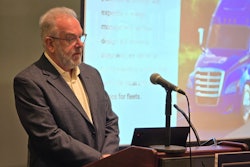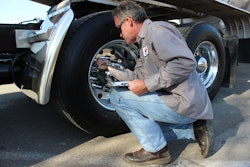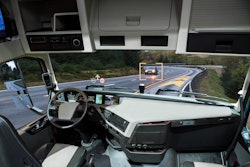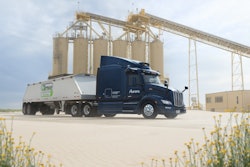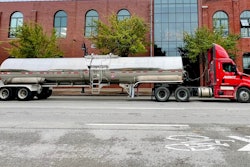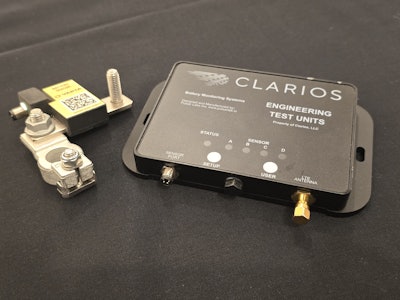
Clarios has launched IdleLess, a real-time idle reduction and battery monitoring solution aimed at helping fleets reduce annual fuel costs by $3,300 per truck and lower emissions by 8.6 metric tons each year. As a subscription-based product of the battery company’s recently announced Clarios Connected Services, IdleLess promises to lower fuel consumption and emissions, extend battery life and reduce wear and tear on sleeper tractors.
“Our system reduces unnecessary engine idling and maximizes the value of AGM batteries,” said Junior Barrett, global director of business development for Clarios. “You think about an AGM battery today, they can be utilized and go as far down as 20% capacity levels and still work… We're actually teaching people how to utilize their batteries to the best and take the best advantage of them.”
IdleLess uses a sensor installed directly on the terminal post to measure voltage, current and temperature data coming off the AGM battery. The sensor relays the raw battery information through a cellular gateway into Clarios’ cloud, where proprietary AI algorithms convert the data into predictive insights on the battery’s state of charge. Communications are sent back via the onboard telematics platform to let the driver know if there is enough battery power to support a hotel load or if they need to start the engine to handle power consumption and optimize battery life, preventing a battery-related downtime event.
 Clarios' IdleLess uses a sensor installed directly on the terminal post to measure voltage, current and temperature data coming off the AGM battery.
Clarios' IdleLess uses a sensor installed directly on the terminal post to measure voltage, current and temperature data coming off the AGM battery.
Clarios says the average sleeper truck idles 1,800 hours per year, and its idle-reduction technology allows fleets to reduce idling by 60 percent per vehicle.
“The Clarios idling reduction solution not only maximizes battery potential but also revolutionizes the way drivers and fleet managers understand and utilize battery power,” said Cagatay Topcu, vice president of Clarios Connected Services. “With real-time battery monitoring, advanced algorithms, and instant communication, drivers can confidently embrace idling reduction, knowing they have reliable insights at their fingertips. This dynamic approach ensures that batteries are used to their fullest potential, drastically reducing unnecessary idling and boosting overall efficiency.”

